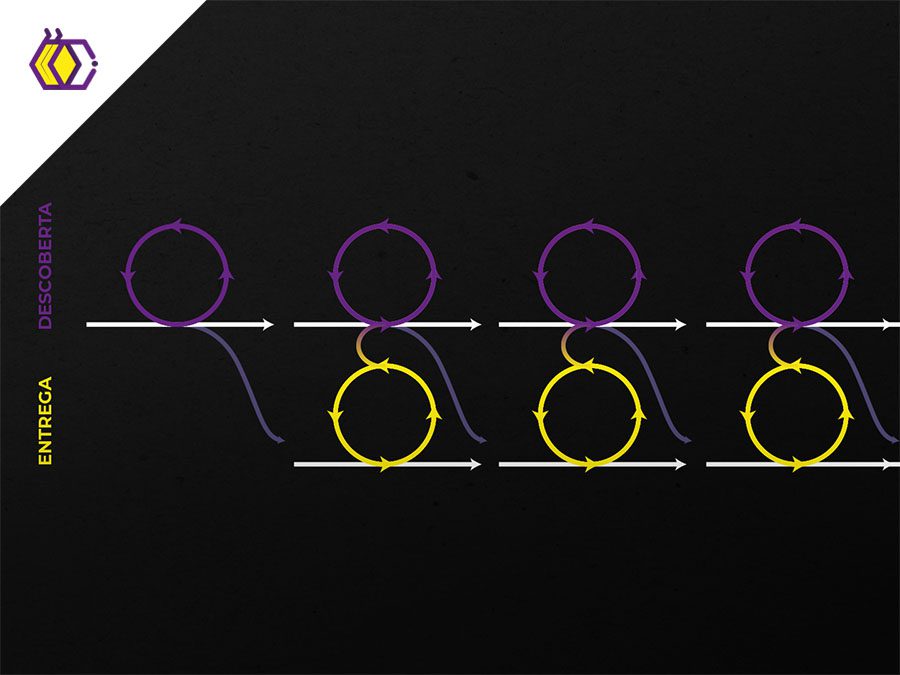

Dual Track
(6 minutes of reading) Dual Track is an innovative way of managing projects, which combines traditional project management strategies with agile methodology. It allows teams to work on multiple tasks simultaneously, while also providing structure and focus. This helps increase velocity and keep the entire team accountable for how a project is progressing. Dual Track provides flexibility and scalability while keeping control over projects. It uses two tracks - one focused on big-picture planning and the other dedicated to tracking day-to-day progress. This allows teams to work more efficiently as they can easily switch between these two tracks depending on their needs at any given time. Overall, Dual Track provides organizations with a powerful tool to manage their projects and ensure everyone is working together to effectively achieve goals. DUAL TRACK BENEFITS Do you want to improve the efficiency of your business and gain insights into the customer journey? If your answer is a big "YES!", the Dual Track can be an excellent choice. This popular strategy combines agile and waterfall methods to get the best possible results. It's an effective way to maximize resources while minimizing risk. Dual Track has become increasingly popular in recent years due to its ability to balance short-term goals with long-term goals. By having two teams working in parallel, one team can focus on developing quick solutions for immediate needs, while the other team focuses on creating more scalable solutions for future needs. This allows for maximum flexibility and agility, and encourages collaboration across teams. Additionally, this approach helps foster innovation by taking teams out of their comfort zone and challenging them to find creative solutions. WHAT ARE THE MAIN CHALLENGES OF DUAL TRACK? As previously stated, Dual Track allows teams to explore different options and make decisions faster, while also reducing risk and simplifying delivery. However, dual track can be difficult to implement correctly as it requires significant coordination between team members. In this article, we will discuss the main challenges associated with using dual track project management. One of the biggest challenges is ensuring that all team members understand the expectations of each line of work and how they should interact with each other. It is important that everyone involved in the project has a clear understanding of their roles and responsibilities so that they can collaborate effectively on project tasks. In addition, teams need to be very attentive to communication protocols so that there are no misunderstandings or unnecessary delays in delivering results. IMPLEMENTING DUAL TRACK Implementing a dual track system can lead to more successful projects by allowing for faster communication between teams and better coordination between departments. To successfully implement dual track systems, organizations must start by setting clear goals and expectations for each team involved in the project. For example, when developing a new product or service, it's important to determine who will be responsible for what tasks and how they will work together to achieve their shared goals. Additionally, companies must ensure that all team members are properly trained to maximize their effectiveness within the system. SUCCESSFUL DUAL TRACK PROCESS EXAMPLES The Dual Track process is an innovative approach to project management and innovation that has been successful in many companies. By utilizing two parallel tracks, organizations can jointly explore incremental and disruptive innovations. This allows them to develop products and services faster while keeping costs low. Examples of successful dual processes include Amazon 's two pizza rule, Airbnb hackathons and Spotify Agile teams. Amazon 's two pizza rule states that any team meeting should consist of no more than the number of people who could be fed two pizzas - a limit to the size of groups used for brainstorming and idea development. Airbnb took this concept further by hosting hackathons to quickly build prototypes; they encouraged experimentation during long planning sessions, allowing employees to work on projects outside of their normal roles. CONCLUSION: THE BENEFITS OVERCOME THE CHALLENGES The Dual Track system is gaining traction as an effective way to stay on top of both short-term goals and long-term goals. With the dual path, organizations can reap the benefits of achieving their goals while focusing on innovation and development. In conclusion, the benefits of implementing a Dual Track system outweighed its challenges. One benefit is that it allows for more flexibility when planning projects or goals. Both paths offer organizations the opportunity to change quickly in response to changing conditions, without sacrificing progress against their long-term goals. Additionally, by having two separate tracks to measure progress, organizations can identify areas where they need additional resources or guidance before they become major issues down the road. What did you think of our article? Be sure to follow us on social media and follow our blog to stay up to date!
Share this article on your social networks:
Rate this article:
[yasr_visitor_votes size=”medium”]



